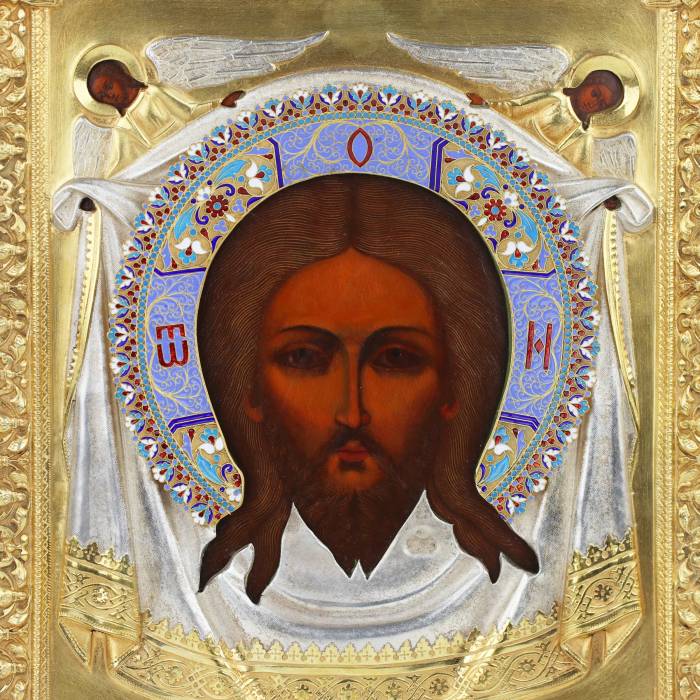
AntiqonART consultant will contact you within one business day after receiving your request.















Discover how the value of similar works has evolved over the past 10 years. Art is not only beauty — it's an investment.
Discover how the value of similar works has evolved over the past 10 years. Art is not only beauty — it's an investment.
Antiqon ART offers free packaging, insurance, and delivery for most items purchased through the company.
Poinçons:Maître essayeur Oleks Lev Fiodorovitch – poinçon L • O avec une barre et l`année 1894.Poinçon de la ville de Moscou – image de Saint Georges terrassant le dragon.Poinçon du maître: Ivan Filippovitch Tarabrov – initiales IT dans un écusson ovale.
Techniques et matériaux:Bois, tempera, argent, émail cloisonné et champlevé, dorure, ciselure et gravure.
Dimensions: 31,5 × 28 cm.
Icône en bon état ancien avec des signes minimes du temps. Émail présentant un craquelé naturel correspondant à son époque. Dorure brillante. Aucune perte constatée. Peinture stable.Les informations sur létat sont fournies uniquement à titre indicatif.Ce rapport nest pas exhaustif et peut ne pas refléter tous les défauts, restaurations ou modifications. Antiqon ne procède pas à des expertises de restauration professionnelles. Les informations sont basées sur une évaluation subjective mais qualifiée de nos spécialistes.Nous recommandons vivement de consulter un expert indépendant avant l’achat.Veuillez également consulter les Règles de vente aux enchères et le Glossaire.
The condition report is provided for informational purposes only.
It is not comprehensive and may not reflect all defects, restorations, alterations, or adaptations, as Antiqon does not perform professional conservation-level assessments. The information is based on a qualified, yet subjective, evaluation by our specialists.Before purchasing, we recommend consultation with an independent expert.Please also consult our Terms and conditions and Glossary A-Z, which contain important information on lot characteristics and sale conditions.

Thank you for your request!
Our consultant will contact you soon.

AntiqonART consultant will contact you within one business day after receiving your request.
Thank you for your request!
Our consultant will contact you soon.

AntiqonART consultant will contact you within one business day after receiving your request.








